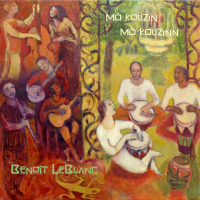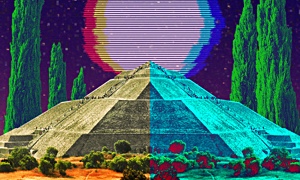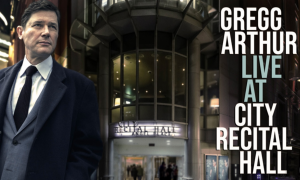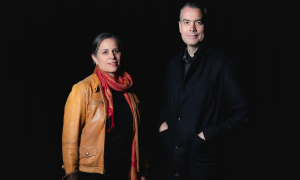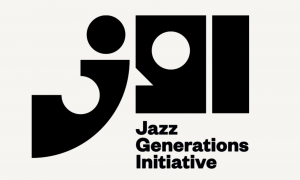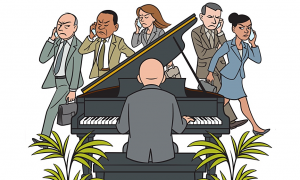Things have changed in the global Chicha world since Barbès released its first compilation in 2006. Chicha has not only joined the ever-growing cumbia family as one of its established cousins but, all over Latin America, it has attained cult status and reached out to audiences until then more accustomed to listening to Rock En Español—or Rock En Ingles for that matter—than any form of Tropical music. Chicha has now crossed social and geographical boundaries and can be heard at parties around the world.
Of course, parties theses days require vinyl. For those of you who can't afford to go scour the used bins of Quilca, we thought we'd make it easier and release a double LP with some of the best songs from Roots of Chicha volume 1 and 2. We have teamed up with label and distributor Fatbeats—who know a thing or two about dance music—and are bringing you 23 songs by Los Mirlos, Juaneco y su Combo, Los Hijos del Sol, Los Diablos Rojos, Chacalon y la Nueva Crema, Los Shapis, Ranil, Los Destellos, Manzanita and Los Wemblers. The finest chicha ever produced in Lima or Iquitos.
Chicha is a good word. It's short, snappy and easy to remember. Context being everything though, it's not surprising that it has gone on to become a totemic word conjuring both pride and shame, representing thousands of years of pre- Colombian tradition on one hand, and five hundred years of servitude and neglect culminating in the harsh slums of Lima on the other. Chicha is originally the name of an alcoholic drink, made of fermented maize, which the Incas were especially fond of. In the past thirty years, however, the word has taken on a pejorative connotation.
Peruvian cumbia started being called chicha in the late 70s, around the same time that the music came to be viewed as the expression of the slums—the pueblos jovenes. Little by little, the word became an adjective, and people now talk of chicha culture, chicha press, chicha architecture, even of a chicha president, and none if it—you guessed right—is meant as a compliment. Chicha suggests corruption, shady deals, and cholos—a derogatory term for a person of Andean heritage that, of late, is being reclaimed and worn as a badge of honor by the very cholos it was supposed to demean in the first place.
Few people would call themselves cholo, or listen to chicha, in San Isidro or Miraflores, the middle class neighborhoods of Lima. While the word chicha itself is still synonymous with lower-classes and tastelessness, cumbia has become acceptable—as it first was in the late 60s when, in all parts of the city, people partied to the new tropical rhythm.
In 1968, Enrique Delgado released his first record on Odeon with his new group, Los Destellos, single-handedly creating Peruvian cumbia. He codified the genre early on by using the electric guitar as the primary melodic instrument, and mixing cumbia rhythms with folkloric huaynos, criollo voicings, Cuban guarachas and guajiras, rock, boogaloo, surf, psychedelia, oriental music, classical music, and bits and pieces from Brazil, France, Chile—all without ever using the words post-modern, pastiche or mélange. All Peruvian cumbia and chicha bands for the next thirty years would end up drawing from the exact same sources.
Most Peruvians to this day recognize three main national types of popular Peruvian music. There's criollo music, which is played on Spanish guitar, accompanied by spoons or castanets, sometimes cajon, and one or two singers. The repertoire consists mostly of waltzes and marineras, with an occasional polka and the relatively recent addition of Afro-Peruvian festejos. Criollo is often considered the “national" music of Peru. Folclor, or music from the Andes, is another genre. The huayno is its most common expression,and can be played by brass bands, harps, charangos, or just guitar. The panpipes bands, popular on the streets of most European and North American cities, are actually less common. And then there's Afro-Peruvian music, the music passed on by generations of former slaves, popularized and codified in the 60s and 70s. In the past thirty years, a lot of Afro-Peruvian music has found its way into criollo music, the way the criollo guitar had found its way into folclor. Musicians, while usually specialized, often hopscotch from one genre to the other, and most chicha musicians, particularly singers and guitarists, are schooled in criollo music, which has had at least as strong an influence on chicha as traditional Andean music.
There were cumbia bands in Peru before Los Destellos. Los Demonios de Mantaro, from he highlands of Junín, were an example. They modeled their sound on the Colombian bands of that era and scored the first Peruvian cumbia hit, “La Chichera," back in 1965—which is one of the reasons the music would later be called chicha. Los Compadres del Ande, around the same time, used a similar format, but with the added bite of an electric organ, foreshadowing the sounds of Juaneco y su Combo and Manzanita, who appeared a few years later.
Meanwhile, in Lima, the electric guitar was the new thing. The guitarra criolla, the classical Spanish guitar, was pretty much the national instrument. It was used in criollo waltzes and marineras, and by a great many folkloric bands. The electric guitar was first embraced by Nueva Ola bands (New Wave,, as rock was called in the early 60s), but soon criollo guitar players started switching as well and used it in all kinds of “tropical" bands (música tropical being anything that used an Afro-Cuban or Afro-Carribean rhythm section—bass, bongos, bells, timbales and congas). To this day, most chicha guitarists are often conservatory-trained players who can switch from Bach to huayno and criollo music but yet are still scorned by critics who view them as uncouth.
Before 1977, Peruvian cumbia was rarely called chicha. However, in retrospect, it is hard to call some of the proto-chicha bands cumbia bands, as cumbia rhythms barely figured into their music. Pioneer Compay Quinto was one of the first electric guitarists to specialize in an all-Cuban repertoire, mixing up a surf-like esthetic with criollo technique and syncopated Cuban montunos. Jhon Beny, leader of the band Los Ribereños, was another. Already slightly more syncretic in nature, Los Ribereños still played mostly Cuban music, with an occasional nod to Andean music. However, even their most Cuban covers had a distinct, yet hard to define, Peruvian flavor. To paraphrase Supreme Court Justice Potter Stewart's comment on pornography, all I can say is that “I recognize it when I hear it."
Both Compay Quintos and Los Ribereños are considered part of the Peruvian cumbia canon, even though neither ever really played cumbia. In a way, this is part of the cumbia credo around the world—most of it has little to do with the original music from coastal Colombia. Much like Rock and Roll, non-Colombian cumbia is defined mostly by its instrumentation and is essentially idiosyncratic in nature. To start playing cumbia, just refer to what you're playing as cumbia. Using a guiro could help.
Paradoxically, the Velasco years (1968-1975) were to be the golden age of Peruvian cumbia, despite the dictator's dislike of the genre. Los Destellos proved so irresistible that every Peruvian label rushed to launch their own tropical bands, starting with Odeon/ IEMPSA, El Virrey and Dinsa and later Infopesa, Sonoradio, FTA and more. By 1970 it had already become an incredibly crowded field. Bands were roughly divided between cumbia costeña, which, like Los Destellos, was primarily from Lima, and cumbia amazónica, which started almost around the same time with bands such as Juaneco y su Combo and a little later with Los Wemblers and Los Mirlos.
Chicha, also called cumbia andina, was not officially born until the late 70s. In a way, until 1975, the music was defined by a crazy form of cosmopolitan eclecticism. Manzanita and Los Destellos had no problem switching styles, and neither did their constituency. They went from pathos to comedy, from California surf to Andean melodies. They covered classic huaynos, sang about beer (yes) and marijuana (no). Enrique Delgado used a drum kit and a Moog on some of his recordings,
Los Quantos covered Simon and Garfunkel's “The Sounds of Silence." Los Yungas used a banjo. There were no rules, yet the music had an incredibly strong identity. Little by little, it all got more codified. People in the pueblos jovenes started identifying with the music and with identification came expectations. Bands who were able to meet those expectations did very well and established a lasting style that relied on a more social message. People needed the songs and their references to mirror their own lives.
Most ethnomusicologists insist that chicha is defined by its Andean flavor—which is debatable. Most, if not all, chicha musicians are from Lima and most use huaynos and pentatonic scales in about the same proportions as bands like Manzanita or Los Hijos del Sol. The great exponents of 1980s chicha (such as La Mermelada, Chacalón or Centeno) use exactly the same musical elements as the ones pioneered by Los Destellos.
Chicha is sometimes easier to define in nonmusical terms. The definite Andean aspect of the music is the direct connection all the players felt to their heritage. Most had roots in the highlands—either by birth or from their parents. Most lived in poor neighborhoods such as Comas, El Agustino, or la Victoria, which had a majority of provincianos—migrants from the Andes. Their audience related as much to the lyrics as it did to the music. 1980s chicha had a lot more singing than 70s cumbia, which tended to have more instrumentals. Chicha lyrics usually address the harsh lives of provincianos: looking for work, being betrayed, driving a bus, craving a better life, suffering.
Los Shapis could be the exception. Their first album, Los Autenticos Shapis, made them overnight superstars. Their first big hit, “El Aguajal," was a huayno, which was not in itself novel, but singer Chapulín's style was definitely rooted in the highlands with no hints of tropical influence.
While Los Shapis use the same musical vocabulary—montunos, tumbaos—their sound remains more serrano, even when their songs veered more towards rock or ballads. Other factors made 80s chicha distinct from the early 70s cumbia. Choice of instruments and production values counted for a lot. Keyboards were no longer Farfisas but Korgs. A number of guitarists stopped using amps altogether in favor of effects racks plugged directly into a PA. Singers such as Chacalón started using a lot of reverb, and the percussion section saw the addition of electronic percussion pads. In general, the music became more processed, as if trying to claim its urban status. It was a new esthetic, which newcomer Juan Campos would know how to exploit with his label Horoscopo.
However, the most significant element of chicha in the 1980s, which in retrospect would come to define all of cumbia in Peru, was a social one. After gaining a stronghold in the province of Ayacucho, the Shining Path (the ultra-violent Maoist group) moved on to Lima in the early 80s and started infiltrating the pueblos jovenes, using them as a base from which to wage war against government institutions. The war in the highlands had precipitated a massive increase in migration to Lima, where conditions had already become more than precarious. With the arrival of the Shining Path, things got even worse.
Gradually, pueblos jovenes were essentially taken hostage. The economy suffered horribly, especially under current president Alan García's first term (1985-1990). The government repression proved as bloody and arbitrary in its targets as the insurgency. The middle-class got even more terrified of cholos, who were seen as potential aggressors.
The social divide became even clearer: a failing first-world environment in the “good neighborhoods," where people lived in fear of bombs and listened to foreign rock on FM stations, and a failed third-world state where people lived in constant fear of violence and listened to chicha on the AM stations. Fear and violence on all sides defined the period, but people in the barrios clearly suffered the most. Suspected of being terrorists, subject to curfews and random searches, closely watched by Shining Path militants, they had very little refuge. An estimated 70,000 people died. By comparison, about 15,000 people died in Argentina's dirty war, and between 3,000 and 4,000 in Pinochet's Chile.
Interestingly enough, while chicha lyrics in the 1980s started tackling social issues (which were usually ignored in the 1970s), they tended to stick to apolitical subjects: poverty, hardship, nostalgia for the highlands, pride of being a provinciano, hard work, family, drinking. A certain Andean ethic was present, but with no reference to the violence, no hint of political demands, no appeal to peace. It's as if nothing was happening.
And this may actually sum up chicha: a sense of defiance marked not by a culture of protest, but defined by silent endurance. As if by ignoring the harsh topical realities of fear and violence, they were negating them and focusing on the universal values of their everyday lives. Love, suffering, work, music.
Of course, parties theses days require vinyl. For those of you who can't afford to go scour the used bins of Quilca, we thought we'd make it easier and release a double LP with some of the best songs from Roots of Chicha volume 1 and 2. We have teamed up with label and distributor Fatbeats—who know a thing or two about dance music—and are bringing you 23 songs by Los Mirlos, Juaneco y su Combo, Los Hijos del Sol, Los Diablos Rojos, Chacalon y la Nueva Crema, Los Shapis, Ranil, Los Destellos, Manzanita and Los Wemblers. The finest chicha ever produced in Lima or Iquitos.
Chicha is a good word. It's short, snappy and easy to remember. Context being everything though, it's not surprising that it has gone on to become a totemic word conjuring both pride and shame, representing thousands of years of pre- Colombian tradition on one hand, and five hundred years of servitude and neglect culminating in the harsh slums of Lima on the other. Chicha is originally the name of an alcoholic drink, made of fermented maize, which the Incas were especially fond of. In the past thirty years, however, the word has taken on a pejorative connotation.
Peruvian cumbia started being called chicha in the late 70s, around the same time that the music came to be viewed as the expression of the slums—the pueblos jovenes. Little by little, the word became an adjective, and people now talk of chicha culture, chicha press, chicha architecture, even of a chicha president, and none if it—you guessed right—is meant as a compliment. Chicha suggests corruption, shady deals, and cholos—a derogatory term for a person of Andean heritage that, of late, is being reclaimed and worn as a badge of honor by the very cholos it was supposed to demean in the first place.
Few people would call themselves cholo, or listen to chicha, in San Isidro or Miraflores, the middle class neighborhoods of Lima. While the word chicha itself is still synonymous with lower-classes and tastelessness, cumbia has become acceptable—as it first was in the late 60s when, in all parts of the city, people partied to the new tropical rhythm.
In 1968, Enrique Delgado released his first record on Odeon with his new group, Los Destellos, single-handedly creating Peruvian cumbia. He codified the genre early on by using the electric guitar as the primary melodic instrument, and mixing cumbia rhythms with folkloric huaynos, criollo voicings, Cuban guarachas and guajiras, rock, boogaloo, surf, psychedelia, oriental music, classical music, and bits and pieces from Brazil, France, Chile—all without ever using the words post-modern, pastiche or mélange. All Peruvian cumbia and chicha bands for the next thirty years would end up drawing from the exact same sources.
Most Peruvians to this day recognize three main national types of popular Peruvian music. There's criollo music, which is played on Spanish guitar, accompanied by spoons or castanets, sometimes cajon, and one or two singers. The repertoire consists mostly of waltzes and marineras, with an occasional polka and the relatively recent addition of Afro-Peruvian festejos. Criollo is often considered the “national" music of Peru. Folclor, or music from the Andes, is another genre. The huayno is its most common expression,and can be played by brass bands, harps, charangos, or just guitar. The panpipes bands, popular on the streets of most European and North American cities, are actually less common. And then there's Afro-Peruvian music, the music passed on by generations of former slaves, popularized and codified in the 60s and 70s. In the past thirty years, a lot of Afro-Peruvian music has found its way into criollo music, the way the criollo guitar had found its way into folclor. Musicians, while usually specialized, often hopscotch from one genre to the other, and most chicha musicians, particularly singers and guitarists, are schooled in criollo music, which has had at least as strong an influence on chicha as traditional Andean music.
There were cumbia bands in Peru before Los Destellos. Los Demonios de Mantaro, from he highlands of Junín, were an example. They modeled their sound on the Colombian bands of that era and scored the first Peruvian cumbia hit, “La Chichera," back in 1965—which is one of the reasons the music would later be called chicha. Los Compadres del Ande, around the same time, used a similar format, but with the added bite of an electric organ, foreshadowing the sounds of Juaneco y su Combo and Manzanita, who appeared a few years later.
Meanwhile, in Lima, the electric guitar was the new thing. The guitarra criolla, the classical Spanish guitar, was pretty much the national instrument. It was used in criollo waltzes and marineras, and by a great many folkloric bands. The electric guitar was first embraced by Nueva Ola bands (New Wave,, as rock was called in the early 60s), but soon criollo guitar players started switching as well and used it in all kinds of “tropical" bands (música tropical being anything that used an Afro-Cuban or Afro-Carribean rhythm section—bass, bongos, bells, timbales and congas). To this day, most chicha guitarists are often conservatory-trained players who can switch from Bach to huayno and criollo music but yet are still scorned by critics who view them as uncouth.
Before 1977, Peruvian cumbia was rarely called chicha. However, in retrospect, it is hard to call some of the proto-chicha bands cumbia bands, as cumbia rhythms barely figured into their music. Pioneer Compay Quinto was one of the first electric guitarists to specialize in an all-Cuban repertoire, mixing up a surf-like esthetic with criollo technique and syncopated Cuban montunos. Jhon Beny, leader of the band Los Ribereños, was another. Already slightly more syncretic in nature, Los Ribereños still played mostly Cuban music, with an occasional nod to Andean music. However, even their most Cuban covers had a distinct, yet hard to define, Peruvian flavor. To paraphrase Supreme Court Justice Potter Stewart's comment on pornography, all I can say is that “I recognize it when I hear it."
Both Compay Quintos and Los Ribereños are considered part of the Peruvian cumbia canon, even though neither ever really played cumbia. In a way, this is part of the cumbia credo around the world—most of it has little to do with the original music from coastal Colombia. Much like Rock and Roll, non-Colombian cumbia is defined mostly by its instrumentation and is essentially idiosyncratic in nature. To start playing cumbia, just refer to what you're playing as cumbia. Using a guiro could help.
Paradoxically, the Velasco years (1968-1975) were to be the golden age of Peruvian cumbia, despite the dictator's dislike of the genre. Los Destellos proved so irresistible that every Peruvian label rushed to launch their own tropical bands, starting with Odeon/ IEMPSA, El Virrey and Dinsa and later Infopesa, Sonoradio, FTA and more. By 1970 it had already become an incredibly crowded field. Bands were roughly divided between cumbia costeña, which, like Los Destellos, was primarily from Lima, and cumbia amazónica, which started almost around the same time with bands such as Juaneco y su Combo and a little later with Los Wemblers and Los Mirlos.
Chicha, also called cumbia andina, was not officially born until the late 70s. In a way, until 1975, the music was defined by a crazy form of cosmopolitan eclecticism. Manzanita and Los Destellos had no problem switching styles, and neither did their constituency. They went from pathos to comedy, from California surf to Andean melodies. They covered classic huaynos, sang about beer (yes) and marijuana (no). Enrique Delgado used a drum kit and a Moog on some of his recordings,
Los Quantos covered Simon and Garfunkel's “The Sounds of Silence." Los Yungas used a banjo. There were no rules, yet the music had an incredibly strong identity. Little by little, it all got more codified. People in the pueblos jovenes started identifying with the music and with identification came expectations. Bands who were able to meet those expectations did very well and established a lasting style that relied on a more social message. People needed the songs and their references to mirror their own lives.
Most ethnomusicologists insist that chicha is defined by its Andean flavor—which is debatable. Most, if not all, chicha musicians are from Lima and most use huaynos and pentatonic scales in about the same proportions as bands like Manzanita or Los Hijos del Sol. The great exponents of 1980s chicha (such as La Mermelada, Chacalón or Centeno) use exactly the same musical elements as the ones pioneered by Los Destellos.
Chicha is sometimes easier to define in nonmusical terms. The definite Andean aspect of the music is the direct connection all the players felt to their heritage. Most had roots in the highlands—either by birth or from their parents. Most lived in poor neighborhoods such as Comas, El Agustino, or la Victoria, which had a majority of provincianos—migrants from the Andes. Their audience related as much to the lyrics as it did to the music. 1980s chicha had a lot more singing than 70s cumbia, which tended to have more instrumentals. Chicha lyrics usually address the harsh lives of provincianos: looking for work, being betrayed, driving a bus, craving a better life, suffering.
Los Shapis could be the exception. Their first album, Los Autenticos Shapis, made them overnight superstars. Their first big hit, “El Aguajal," was a huayno, which was not in itself novel, but singer Chapulín's style was definitely rooted in the highlands with no hints of tropical influence.
While Los Shapis use the same musical vocabulary—montunos, tumbaos—their sound remains more serrano, even when their songs veered more towards rock or ballads. Other factors made 80s chicha distinct from the early 70s cumbia. Choice of instruments and production values counted for a lot. Keyboards were no longer Farfisas but Korgs. A number of guitarists stopped using amps altogether in favor of effects racks plugged directly into a PA. Singers such as Chacalón started using a lot of reverb, and the percussion section saw the addition of electronic percussion pads. In general, the music became more processed, as if trying to claim its urban status. It was a new esthetic, which newcomer Juan Campos would know how to exploit with his label Horoscopo.
However, the most significant element of chicha in the 1980s, which in retrospect would come to define all of cumbia in Peru, was a social one. After gaining a stronghold in the province of Ayacucho, the Shining Path (the ultra-violent Maoist group) moved on to Lima in the early 80s and started infiltrating the pueblos jovenes, using them as a base from which to wage war against government institutions. The war in the highlands had precipitated a massive increase in migration to Lima, where conditions had already become more than precarious. With the arrival of the Shining Path, things got even worse.
Gradually, pueblos jovenes were essentially taken hostage. The economy suffered horribly, especially under current president Alan García's first term (1985-1990). The government repression proved as bloody and arbitrary in its targets as the insurgency. The middle-class got even more terrified of cholos, who were seen as potential aggressors.
The social divide became even clearer: a failing first-world environment in the “good neighborhoods," where people lived in fear of bombs and listened to foreign rock on FM stations, and a failed third-world state where people lived in constant fear of violence and listened to chicha on the AM stations. Fear and violence on all sides defined the period, but people in the barrios clearly suffered the most. Suspected of being terrorists, subject to curfews and random searches, closely watched by Shining Path militants, they had very little refuge. An estimated 70,000 people died. By comparison, about 15,000 people died in Argentina's dirty war, and between 3,000 and 4,000 in Pinochet's Chile.
Interestingly enough, while chicha lyrics in the 1980s started tackling social issues (which were usually ignored in the 1970s), they tended to stick to apolitical subjects: poverty, hardship, nostalgia for the highlands, pride of being a provinciano, hard work, family, drinking. A certain Andean ethic was present, but with no reference to the violence, no hint of political demands, no appeal to peace. It's as if nothing was happening.
And this may actually sum up chicha: a sense of defiance marked not by a culture of protest, but defined by silent endurance. As if by ignoring the harsh topical realities of fear and violence, they were negating them and focusing on the universal values of their everyday lives. Love, suffering, work, music.
For more information contact Press Junkie PR.









